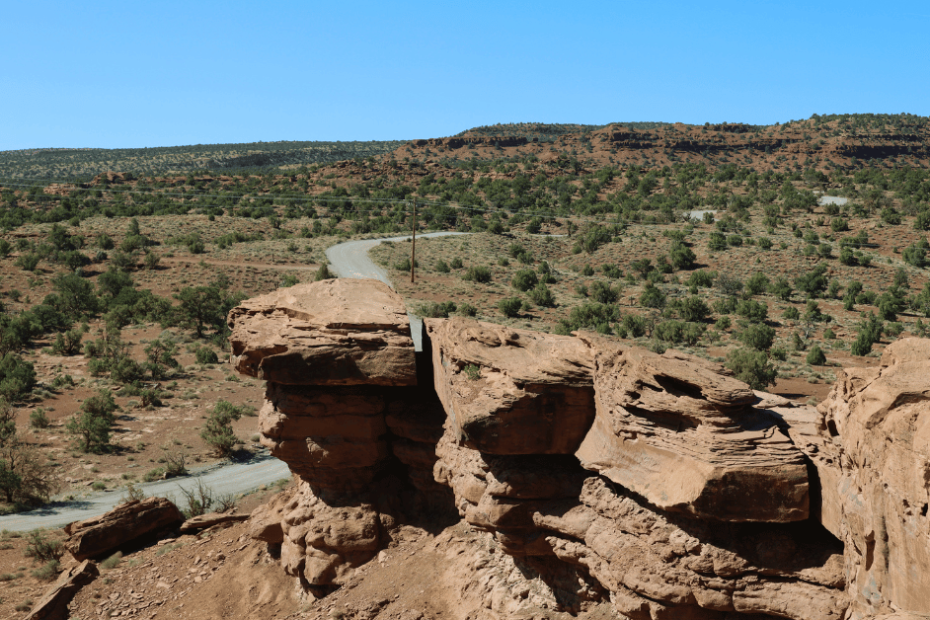Imagine waking up to the breathtaking beauty of Capitol Reef National Park, where towering red rock formations and lush orchards create a stunning contrast. Nestled in the heart of Utah, this hidden gem offers a perfect blend of adventure and tranquility. Whether you’re an avid hiker or a history buff, Capitol Reef promises an unforgettable experience.
In just one day, you can explore ancient petroglyphs, hike through scenic canyons, and savor fresh fruit from historic orchards. The park’s unique world, shaped by millions of years of geological activity, provides a mesmerizing backdrop for your adventure. Ready to discover the magic of Capitol Reef? Let’s jump into the perfect itinerary for your day in this captivating national park.
Key Takeaways
- Unique Landscapes and Geology: Capitol Reef National Park features a remarkable geologic monocline known as the Waterpocket Fold, offering dramatic cliffs, canyons, domes, and bridges for endless exploration.
- Best Times to Visit: Ideal visiting seasons are spring (April-May) and fall (September-October) when temperatures are mild, ranging from 60-80°F. Summer months can be hot, and winter may bring snow.
- Morning Activities: Start your day hiking the Hickman Bridge trail and exploring ancient petroglyphs, providing a blend of adventure and history.
- Midday Adventures: Enjoy a scenic drive through the park and visit the Gifford House for a homemade pie break.
- Afternoon and Evening Experiences: Explore the Fruita Historic District, hike to Cassidy Arch, capture sunset views at Panorama Point, and enjoy dinner in nearby Torrey.
- Travel Tips: Check weather forecasts, start early to beat the crowds, pack essentials like water and sun protection, respect wildlife, and use the visitor center for maps and advice.
Getting Started: Quick Facts About Capitol Reef National Park
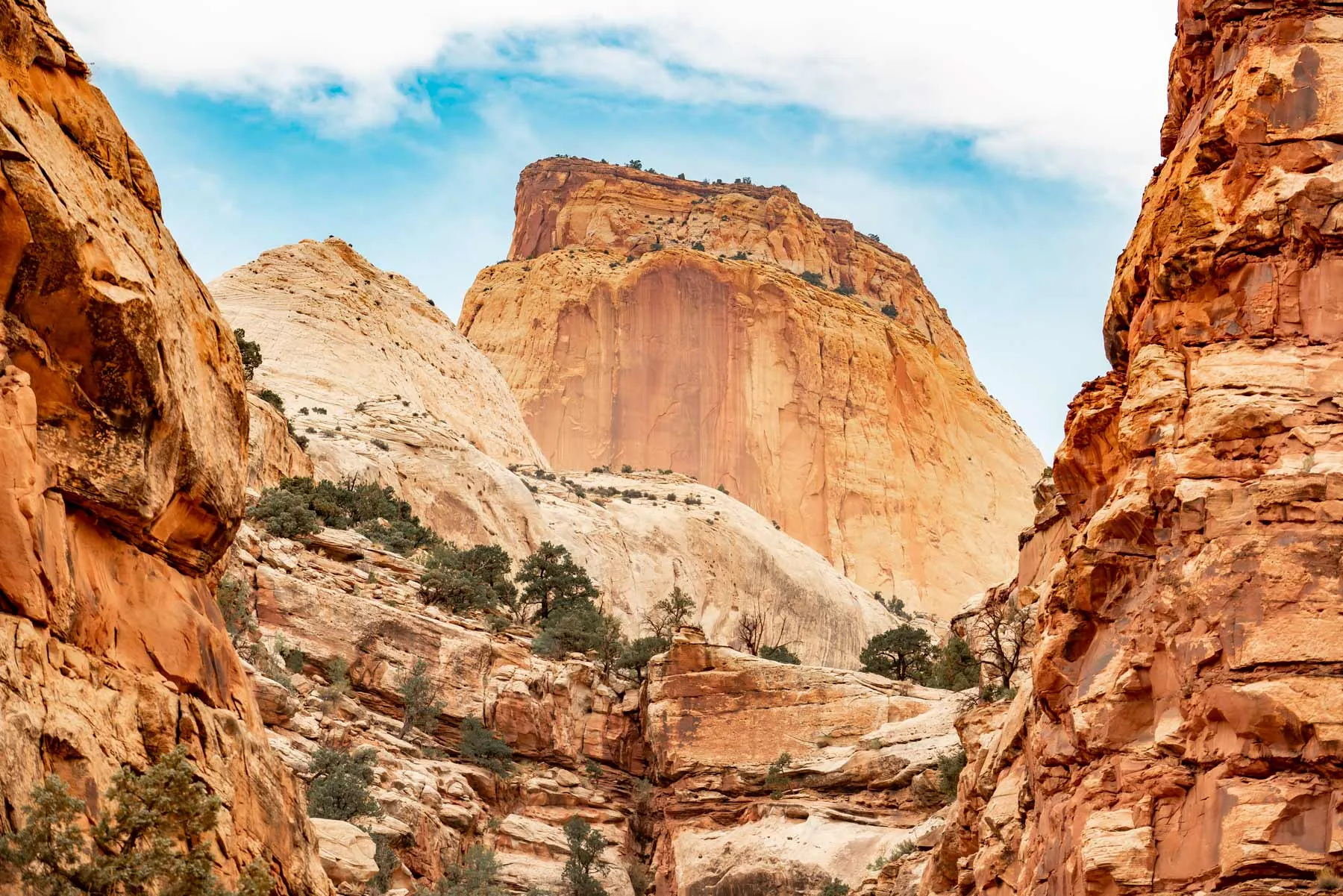
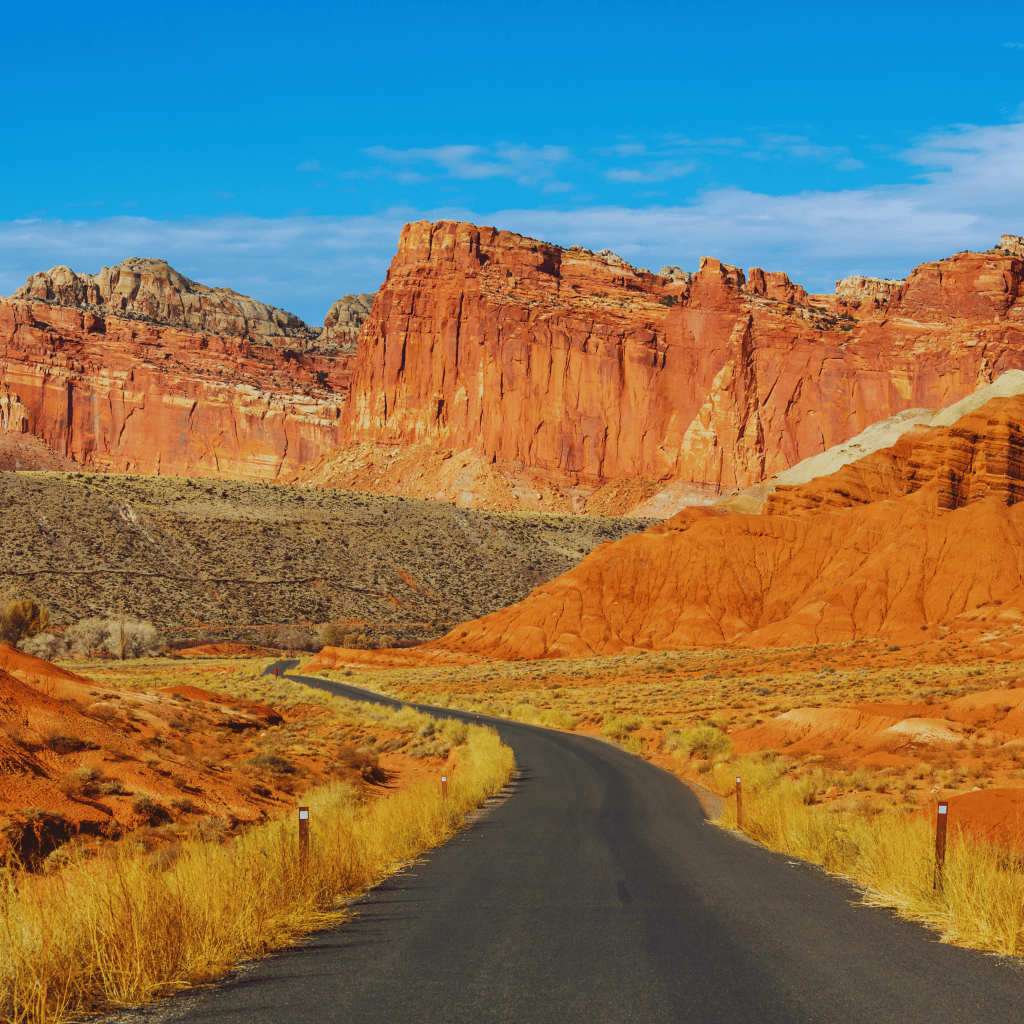
Location
Capitol Reef National Park is in south-central Utah, USA. Nestled in a remote area, it’s an oasis of vibrant red rock contrasts against clear blue skies. The tranquil park offers stunning vistas without the crowds you’d encounter at more famous national parks.
Name Origin
The park’s name is derived from two distinct features. The “Capitol” comes from the Capitol Dome, a white sandstone formation resembling the dome of the U.S. Capitol building. “Reef” refers to the rocky ridges that early settlers found as challenging to traverse as a coral reef.
Geology
Situated in the Waterpocket Fold, Capitol Reef spans a 100-mile-long geologic monocline, a unique wrinkle in the Earth’s crust. This remarkable formation creates a varied world of cliffs, canyons, domes, and bridges, offering endless exploration opportunities.
Size and Accessibility
While smaller than other Utah parks, Capitol Reef is packed with diverse landscapes. Its compact size makes it possible to experience the park’s main highlights in just one or two days. For easy access, start at the visitor center located near the town of Torrey, Utah.
Peak Visit Seasons
The best times to visit are spring (April-May) and fall (September-October) when temperatures are mild, ranging from 60-80°F. Summer months can be hot, exceeding 90°F, but mornings and evenings are cooler and enjoyable for hikes.
Flora and Fauna
The park boasts a rich variety of plants and wildlife. Spot mule deer, bighorn sheep, and an array of bird species. The historic Fruita orchards within the park offer a unique chance to pick peaches, apples, and cherries during harvest seasons.
Morning Adventures
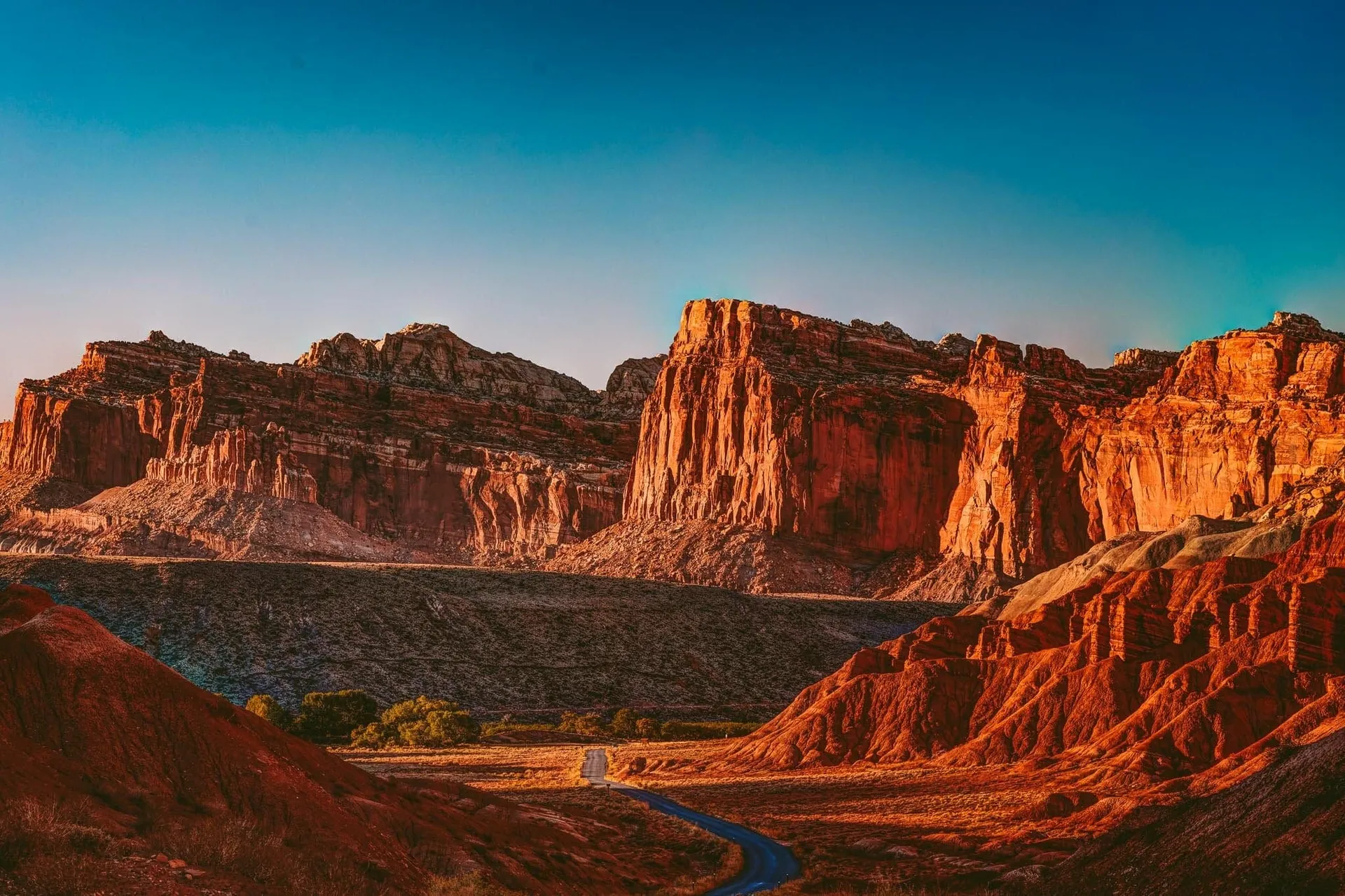

Your perfect day in Capitol Reef National Park starts with morning adventures that will immerse you in its unique landscapes and ancient history.
Hike to Hickman Bridge
- Trail Details: Start your day with the hike to Hickman Bridge, a moderate 1.8-mile round-trip trail. With an elevation gain of 416 feet, you can expect to spend about 1 to 2 hours on this trail, making it a great morning activity.
- Location: The trailhead is conveniently located on Highway 24, roughly 7 miles west of the park’s east entrance sign. You’ll find restrooms available at the parking area, making a quick stop easy.
- Views and Experience: The hike offers spectacular views of Highway 24 and the surrounding canyon. As you make your way, the scenery transitions into more rugged, picturesque terrain, ending at the majestic Hickman Bridge nestled at the back of the canyon. It’s an awe-inspiring sight that’s well worth the effort.
- Location: After your hike, shift gears and explore the ancient petroglyphs scattered throughout the park. One of the most accessible sites is near the Grand Wash Trail, another at Capitol Gorge Trail.
- Views and Experience: These fascinating rock carvings provide a window into the lives of the Fremont people who once inhabited this region. Seeing the petroglyphs is like stepping back in time, offering a tangible connection to the park’s rich cultural heritage. As you gaze at these centuries-old images, imagine the stories they might tell about the ancient inhabitants of Capitol Reef.
Jump into these morning activities for a blend of adventure and history, setting an unforgettable tone for your day in Capitol Reef National Park.
Midday Activities
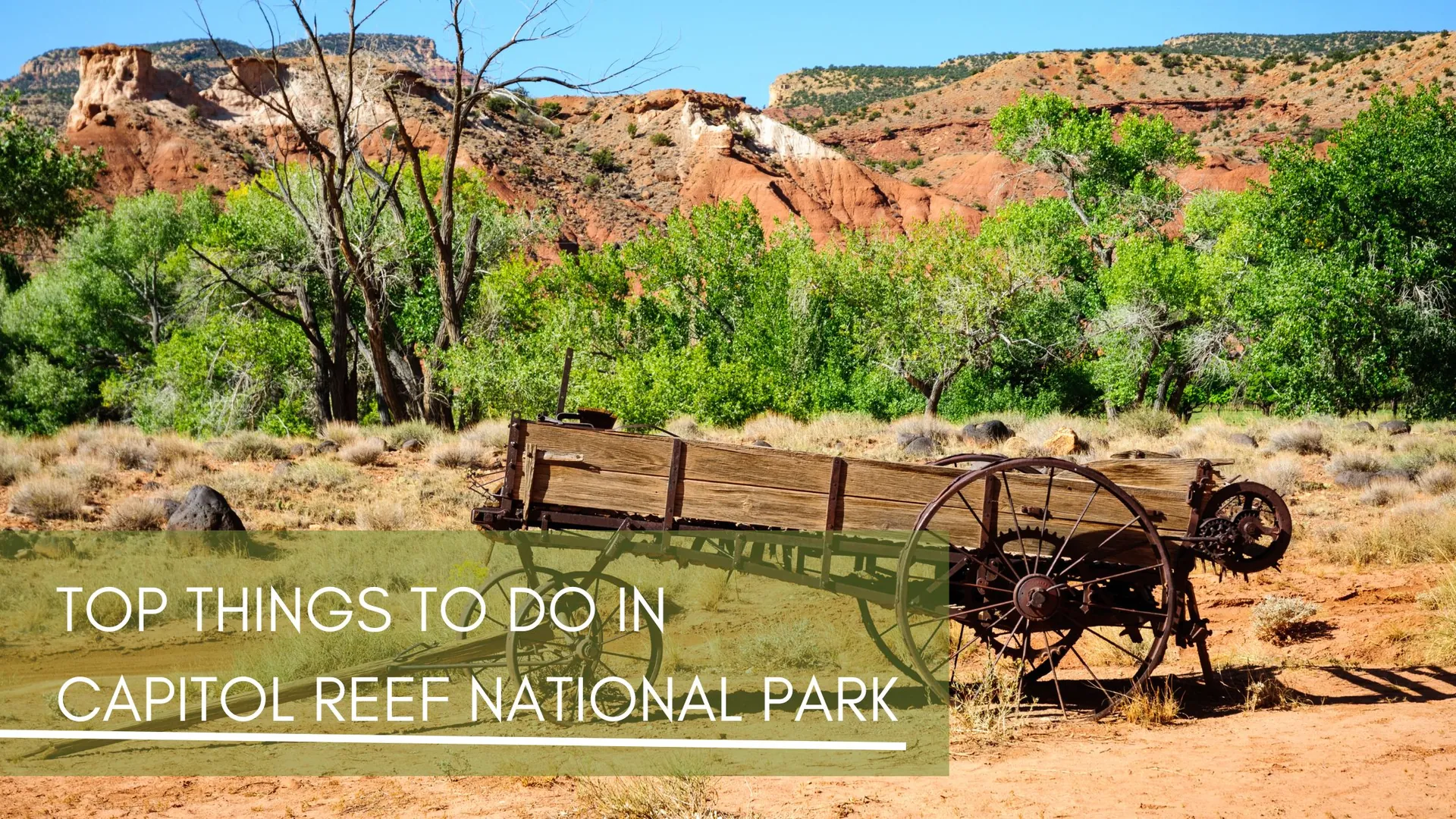
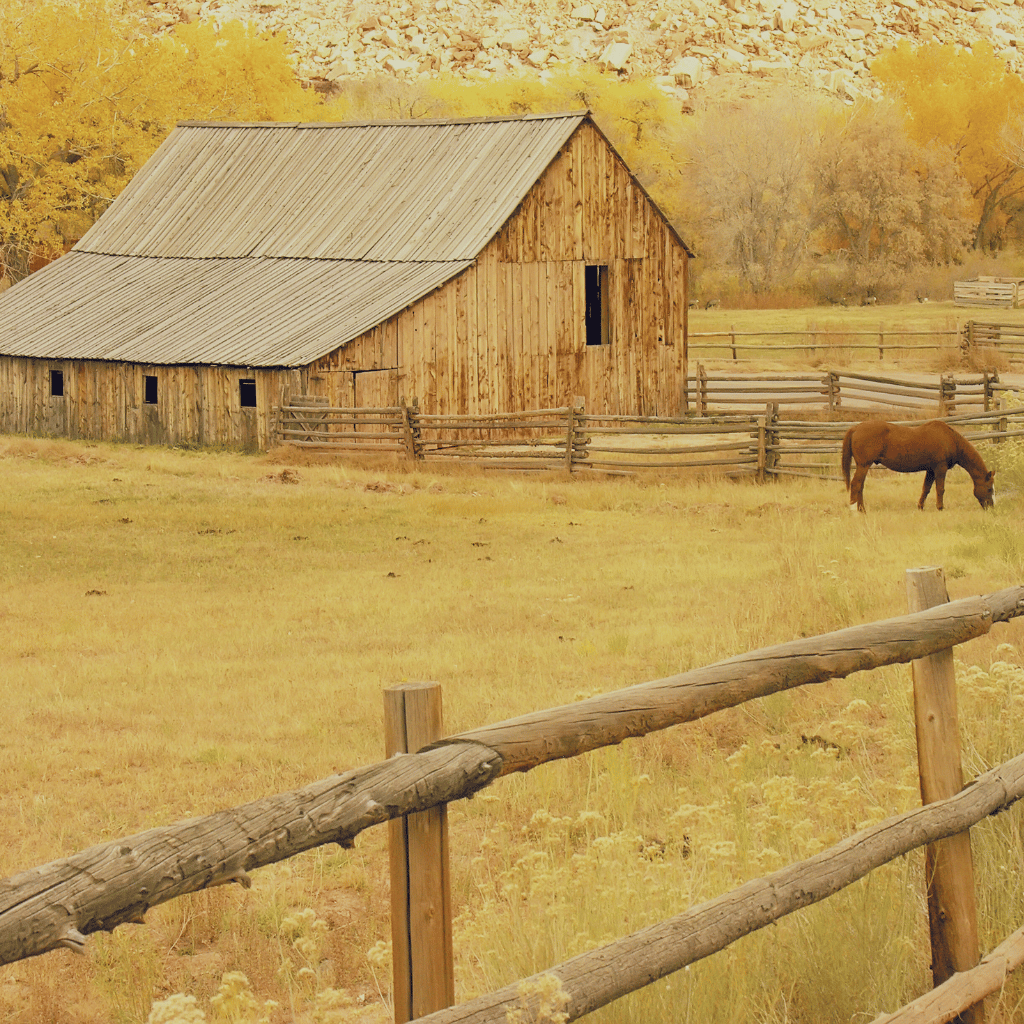
Scenic Drive Through Capitol Reef
The Scenic Drive is a must-do activity in Capitol Reef National Park. You’ll begin on a dazzling 7.9-mile journey that showcases the park’s unique landscapes. The drive starts just beyond the visitor center and typically takes about an hour and a half to complete, giving you ample time to stop and take in several breathtaking viewpoints.
Along the way, you’ll have numerous opportunities to snap photos and immerse yourself in the panoramic views of the Waterpocket Fold, a dramatic warp in the Earth’s crust that creates stunning geological formations. Make sure your camera is ready to capture the colorful cliffs, sweeping valleys, and intriguing rock layers that define Capitol Reef’s splendor.
Visit the Gifford House for Pie
A visit to the Gifford House is another delightful midday activity. This historic homestead, nestled within the park, now functions as a charming museum and bakery. It’s famed for its homemade pies, offering you a delicious break from your adventures. A slice of their fresh pie, made from local fruits, is the perfect treat to recharge your energy while soaking in the history and rustic ambiance of the area. Enjoy your pie on the picnic tables outside, where you can relish both the flavors and the surrounding beauty.
Afternoon Exploration

Explore the Fruita Historic District
Jump into the heart of Capitol Reef by exploring the Fruita Historic District. This charming area, once settled by Mormon pioneers in the late 19th century, is now home to lush orchards and historic structures. Enjoy a peaceful walk among apple, peach, and cherry trees. During harvest season, you can even pick and sample fresh fruit, adding a delicious touch to your visit. Don’t miss the Gifford Homestead, where you can investigate into pioneer history and savor homemade pies, ice cream, and other treats made from the orchard’s bounty.
Hike the Cassidy Arch Trail
Begin on an unforgettable adventure by hiking the Cassidy Arch Trail. Named after the infamous outlaw Butch Cassidy, this trail offers a challenging yet rewarding experience. The 3.4-mile round-trip hike takes you through captivating landscapes of red rock formations. As you ascend, you’ll encounter narrow paths and steep climbs that lead to the majestic Cassidy Arch. Standing atop the arch, you’ll be treated to panoramic views of the park, making the effort well worth it. Remember to bring plenty of water and a camera to capture the stunning scenery.
Evening Experiences
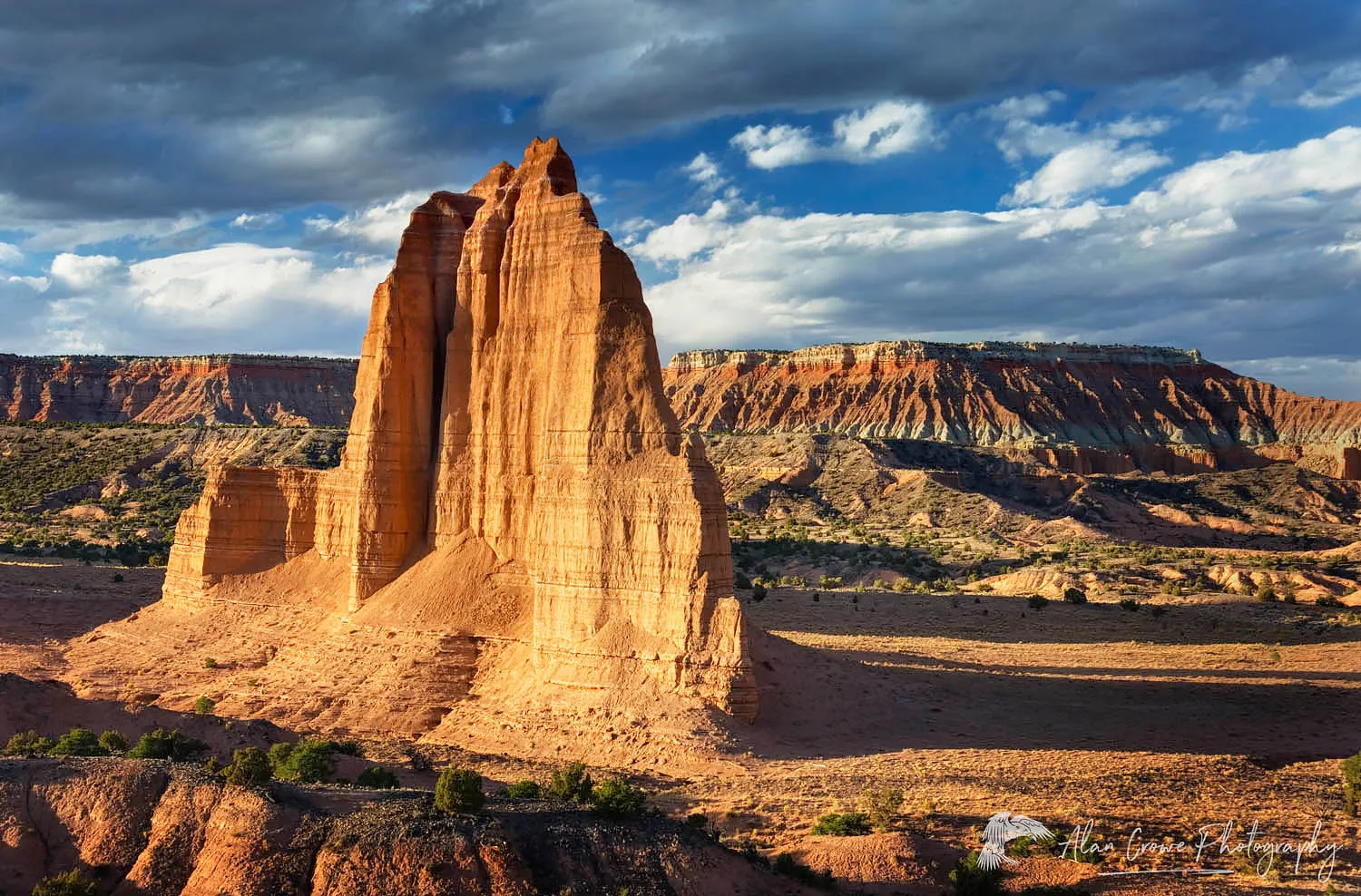
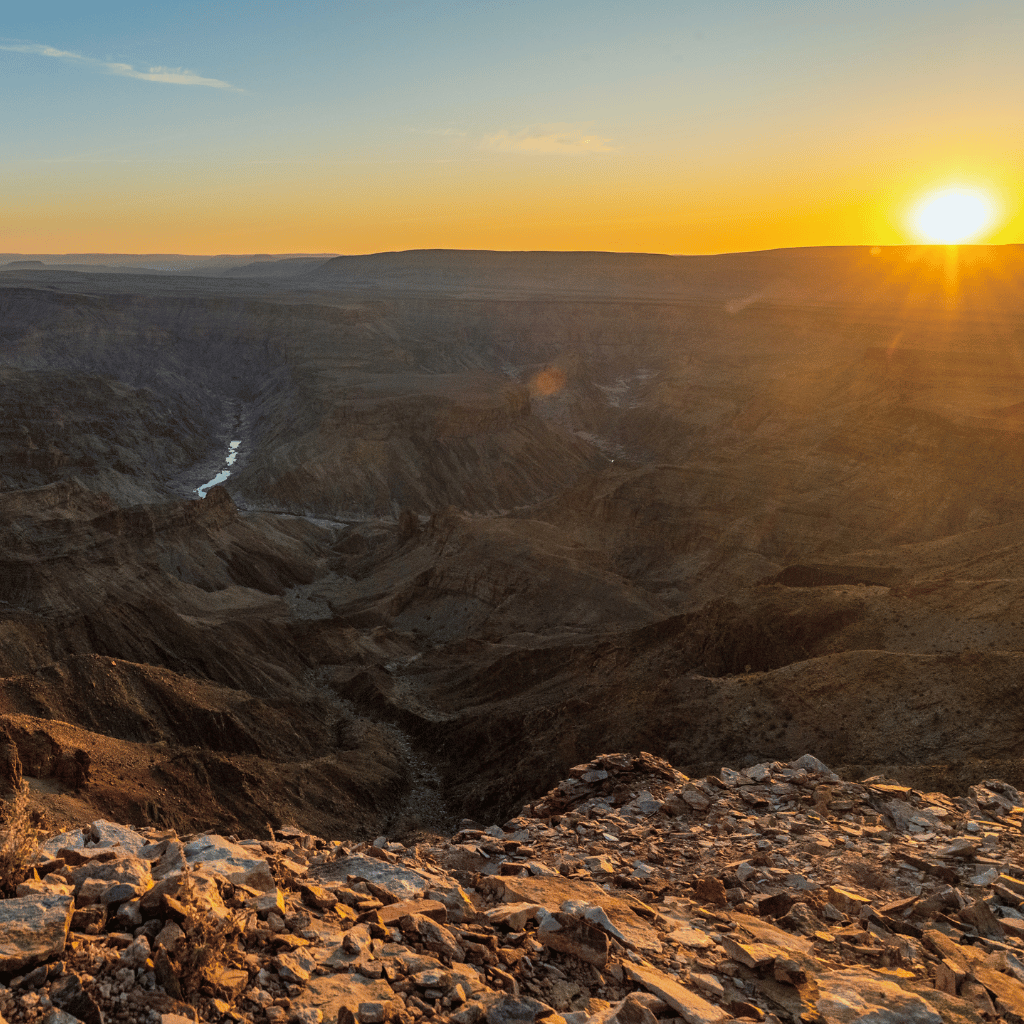
Capitol Reef National Park offers some of its most stunning views in the evening. Here are some must-visit spots to maximize your evening adventure.
Enjoy the View at Goosenecks Overlook
Goosenecks Overlook offers a breathtaking view of the Goosenecks of Sulphur Creek. You’ll be mesmerized by the deep, winding canyon carved by the creek. This overlook is easily accessible by car and requires only a short walk from the parking area. It’s an ideal spot for photography enthusiasts looking to capture the dramatic world. Bring your camera; the views are unforgettable.
Watch the Sunset at Panorama Point
Panorama Point is a must-visit spot for sunset lovers. This viewpoint provides a broad panorama of the surrounding world, including the Waterpocket Fold and colorful rock formations. Watching the sunset here is an experience you’ll cherish. The changing colors of the rocks as the sun dips below the horizon are nothing short of magical. Arrive early, find a good spot, and settle in for an evening you won’t forget.
Dinner and Relaxation
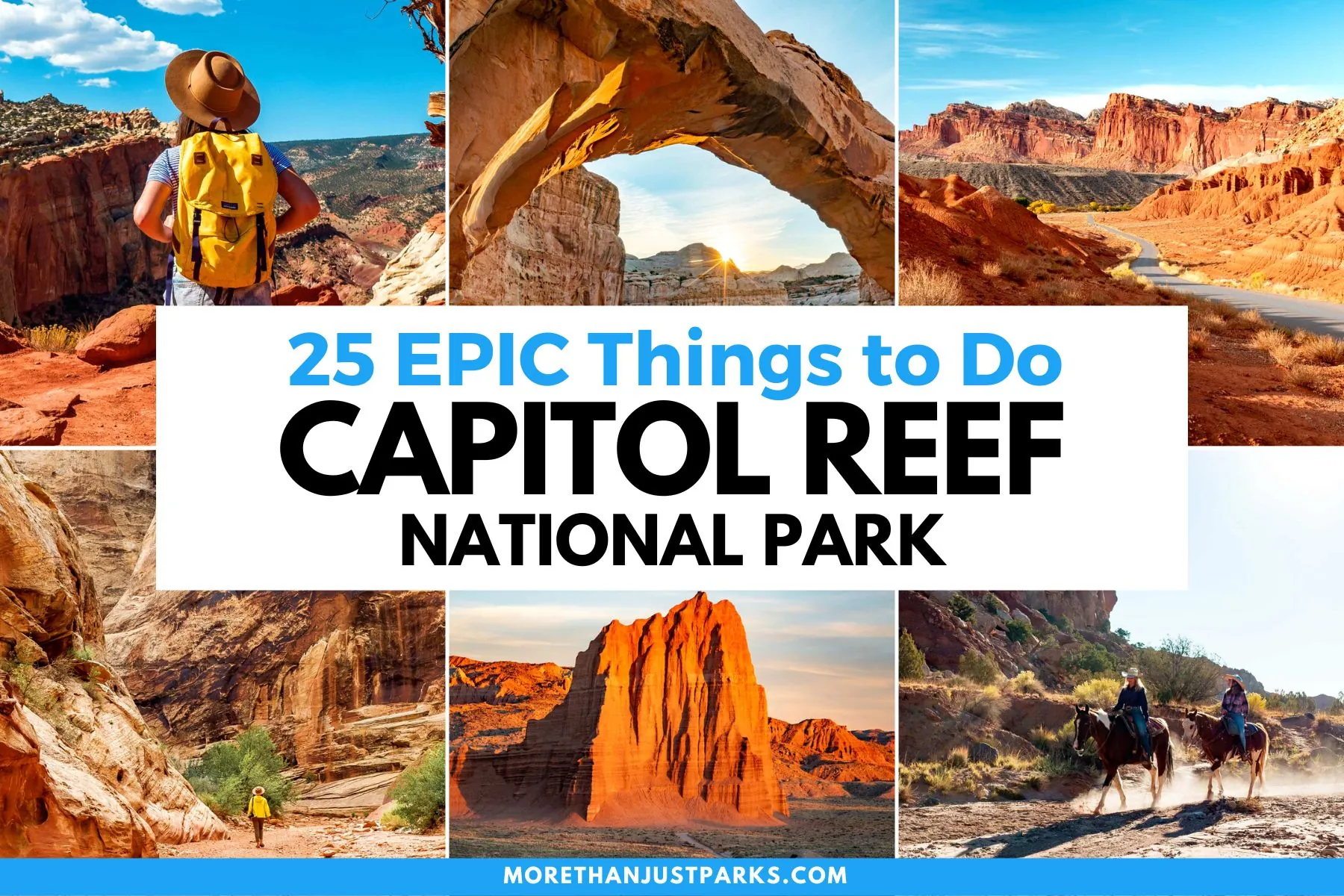

Dine in Torrey
After a day of exploration in Capitol Reef National Park, unwind with a delectable dinner in the nearby town of Torrey. Torrey, just 11 miles from the park, offers a range of dining options to suit various palates and preferences.
- Cafe Diablo: Enjoy southwestern cuisine with a gourmet twist. Signature dishes feature local ingredients and flavors, offering delicacies such as rattlesnake cakes and elk tenderloin.
- The Rim Rock Restaurant: Savor contemporary American dishes with a focus on fresh, regional produce. The outdoor patio provides stunning views of the red rock cliffs, perfect for a serene evening meal.
- Capitol Reef Cafe: Delight in casual dining with classic American comfort food. Known for their hearty breakfasts and homemade pies, this spot is perfect for a no-fuss meal after a long day.
- Hunt & Gather Restaurant: Experience farm-to-table dining with an eclectic menu of fresh, local ingredients. Their selection ranges from artisan pizzas to creative vegan options.
Local Relaxation Spots
Cap off your evening with a relaxing experience in Torrey’s serene settings. Several spots offer lovely ambiances to unwind before bed.
- Sand Creek RV Park: Not just for campers, this spot provides a tranquil area to relax under the stars. It’s an ideal place to enjoy a quiet night on a scenic property surrounded by nature.
- Little West Lake: Take a peaceful evening stroll around this picturesque lake. The serene environment, combined with the soft light of dusk, ensures a calming end to your day.
- Thousand Lakes RV Park: Offers a hot tub with views of the surrounding world. It’s the perfect way to soothe tired muscles while soaking up the night sky.
- Reservation: Make dinner reservations, especially during peak seasons, as restaurants in Torrey can get crowded.
- Packing: Bring a light jacket or sweater since evenings can get cool, even in summer.
- Local Events: Check for local events or live music performances, which can enhance your evening experience.
Enjoying dinner and relaxation in Torrey perfectly complements a day spent exploring Capitol Reef National Park. It provides a well-rounded experience that blends adventure with local charm and comfort.
Helpful Tips for Your Visit
Making the most of your day at Capitol Reef National Park requires a bit of planning and knowledge. Here are some tips to ensure a smooth and enjoyable experience.
Check Weather Conditions
Always check the weather forecast before visiting. Spring and fall offer mild temperatures, making them the best times to visit. Summer can be extremely hot, and winter sometimes brings snow, which can affect trail conditions.
Start Early
Arriving early helps you beat the crowds and the heat. Popular trails like Hickman Bridge and Cassidy Arch are much more enjoyable with fewer people around.
Pack Essentials
Bring plenty of water, snacks, and sun protection. The Utah sun can be intense, even in the cooler months. A sturdy pair of hiking shoes, a hat, and sunscreen are must-haves.
Know Your Limits
Choose hikes based on your fitness level. Hickman Bridge is perfect for a moderate hike, while Cassidy Arch is more challenging and requires more time. The Grand Wash Trail is relatively easy but offers dramatic canyon views.
Respect Wildlife and Nature
Always maintain a safe distance from wildlife like mule deer and bighorn sheep. Do not pick or disturb plants, and remember to pack out all trash. The park is home to fragile ecosystems that need to be preserved for future visitors.
Use the Visitor Center
Start your visit at the Visitor Center near Torrey. It’s a great place for maps, information, and ranger advice. This can help you tailor your day based on current conditions and recommendations.
Photography Tips
Bring a camera or smartphone with enough battery. Goosenecks Overlook and Panorama Point are prime spots for stunning photos, especially at sunset.
Plan for Picnics
The Fruita Historic District offers lovely areas for a picnic. Grab a piece of homemade pie from the Gifford House and enjoy it under the shade of fruit trees.
Stay Safe
Capitol Reef is remote. Cell service may be limited, so let someone know your plans. Carry a basic first-aid kit and know the symptoms of heat exhaustion.
Off the Beaten Path
Consider less frequented trails like the Grand Wash or sections of Cathedral Valley. These offer solitude and unique perspectives of the park’s rock formations without the crowds.
Best Time to Visit Capitol Reef National Park
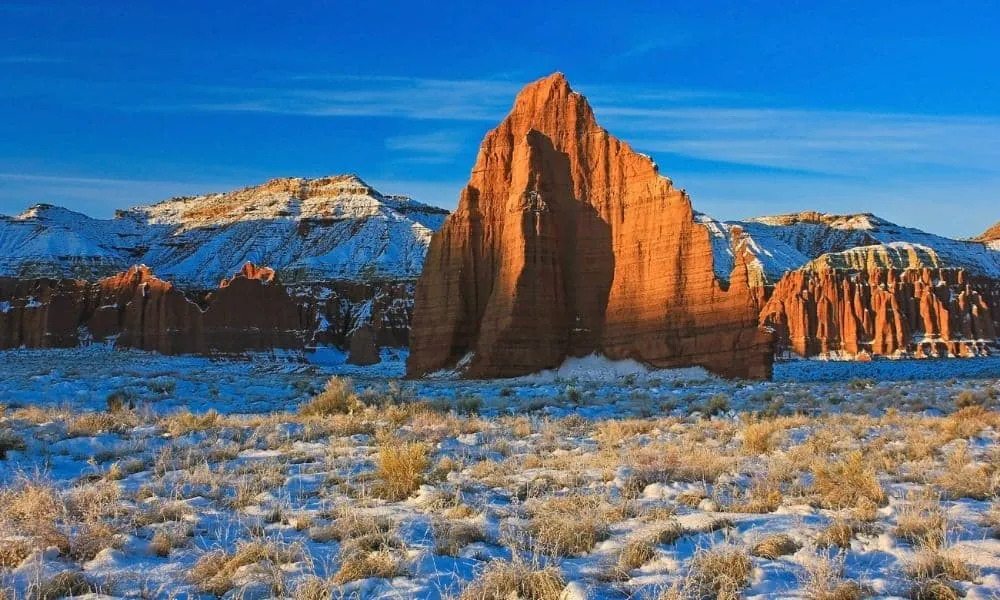
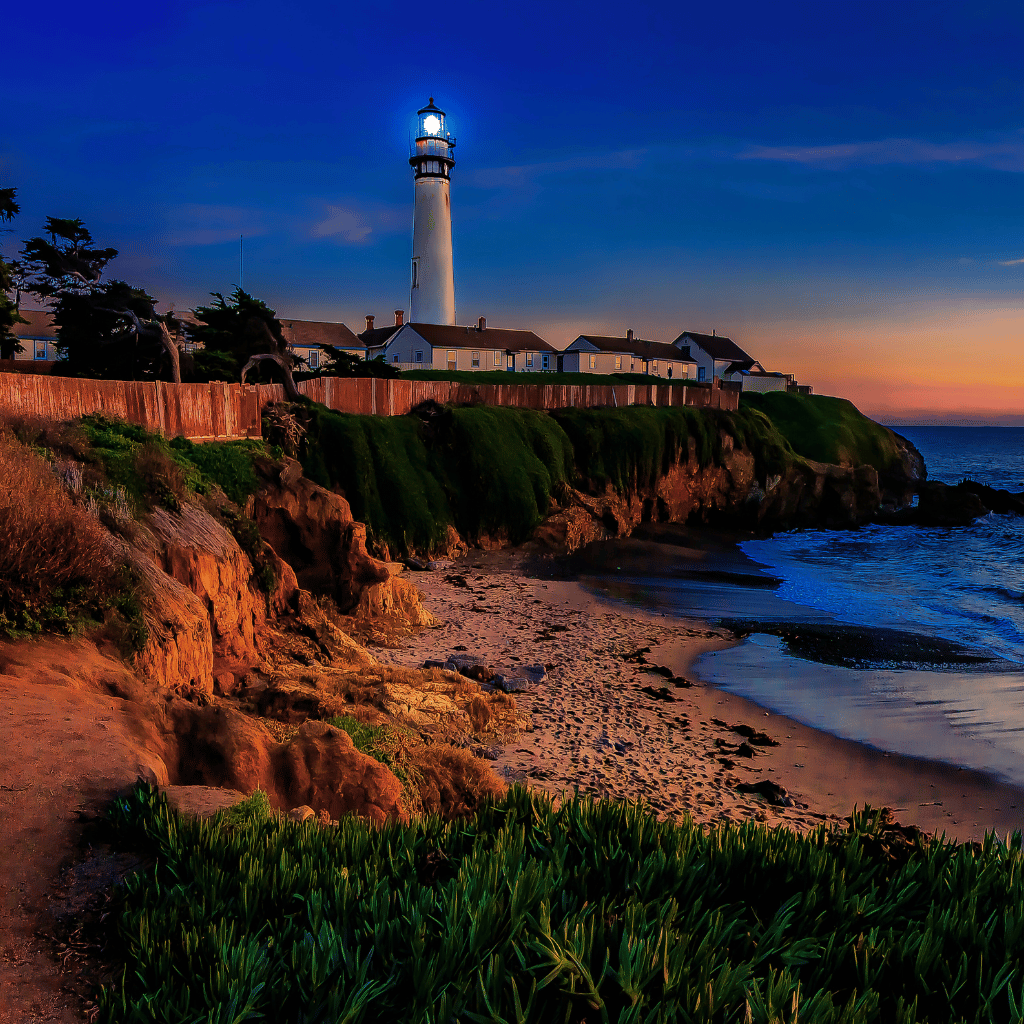
Planning a trip to Capitol Reef National Park? Timing is crucial to ensure you make the most of your visit.
- Spring (April to May): Spring offers mild daytime temperatures ranging from the 60s to 70s Fahrenheit (15-26°C), perfect for exploring the park’s natural wonders. These conditions are excellent for hiking and photography. Flowers bloom during this time, adding splashes of color to the world.
- Fall (September to October): Similar to spring, fall provides pleasant weather with moderate temperatures. The crisp air and vibrant autumn foliage transform the park into a picturesque setting. Fall is an ideal time to explore ancient petroglyphs or hike through scenic canyons without the scorching heat of summer.
- Summer (June to August): While summer brings the longest daylight hours, temperatures often soar above 100°F (38°C). If you visit during this period, plan activities for early morning or late afternoon. You’ll still catch beautiful views without the intensity of midday heat. Sunset hikes to spots like Goosenecks Overlook can make for memorable experiences.
Climate Data
| Season | Daytime Temperature | Nighttime Temperature | Notes |
|---|---|---|---|
| Spring | 60-70°F (15-26°C) | 40-50°F (4-10°C) | Blooming flora, perfect hiking |
| Summer | 85-100°F (29-38°C) | 60-70°F (15-21°C) | Early/late activities recommended |
| Fall | 60-70°F (15-26°C) | 40-50°F (4-10°C) | Ideal weather, colorful foliage |
- Start Early: Beginning your day early helps you avoid crowds and enjoy cooler temperatures.
- Pack Essentials: Carry water, snacks, and sunscreen no matter the season. Weather can be unpredictable.
- Dress in Layers: Especially in spring and fall, temperatures can fluctuate. Layering helps you stay comfortable.
- Check Weather: Always check the forecast before heading out on longer hikes. Thunderstorms can be common in summer and fall.
Choosing the best time to visit Capitol Reef National Park ensures an unforgettable experience, whether it’s the blooms of spring, the mild hikes of fall, or the extended days of summer. Each season offers unique opportunities to connect with nature and history in this captivating world.
Where to Stay Near Capitol Reef
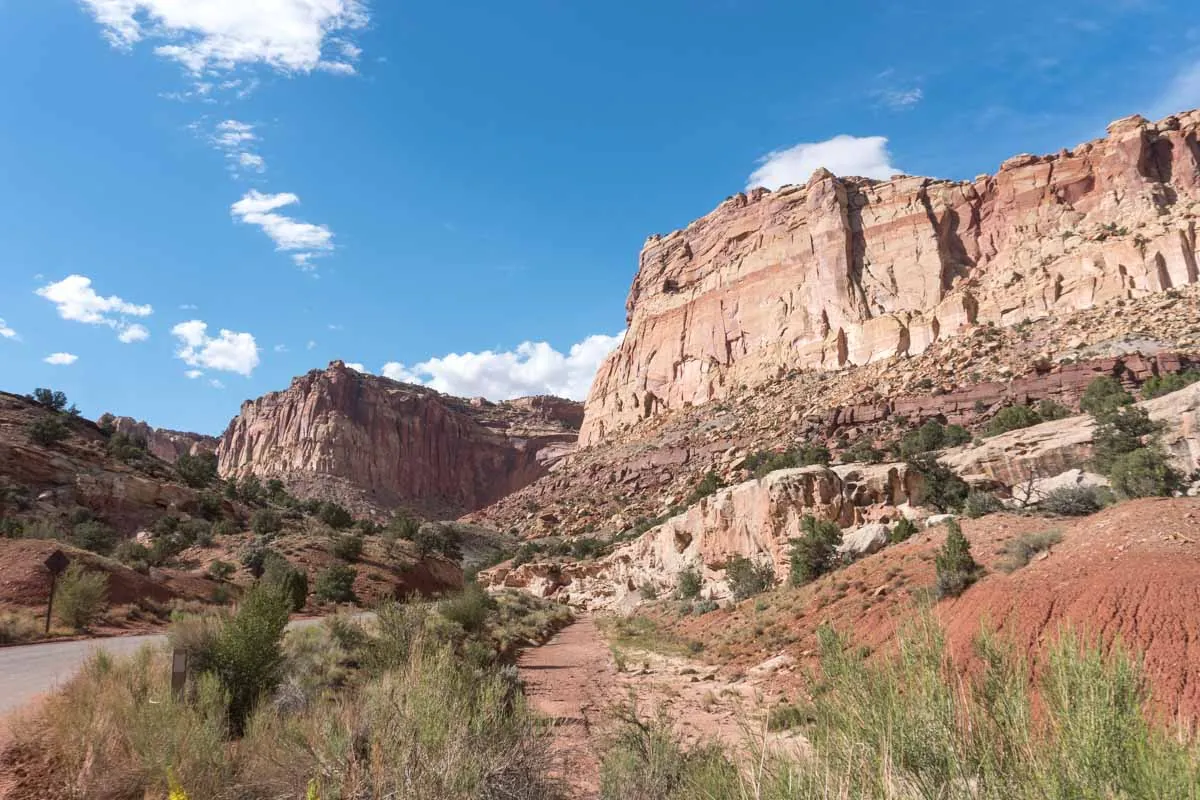
After an unforgettable day exploring Capitol Reef National Park, you’ll want a comfortable place to rest. Nearby Torrey offers a range of accommodations, from cozy bed-and-breakfasts to well-equipped campgrounds. For a more immersive experience, consider staying at one of the park’s campgrounds, where you can sleep under the stars and wake up to the stunning red rock scenery. Whether you prefer a rustic cabin or a modern hotel, you’ll find the perfect spot to unwind and reflect on your adventures. So pack your bags, plan your itinerary, and get ready for a perfect day in Capitol Reef.
Frequently Asked Questions
What can you do in Capitol Reef National Park in one day?
Drive Highway 24 through the park, take in views from Panorama Point, visit Sunset Point, see petroglyphs, drive the Capitol Reef Scenic Drive, hike to Hickman Bridge or Cassidy Arch, stroll through the Grand Wash, and enjoy a pie at the Gifford Homestead.
Which is better, Zion or Capitol Reef?
Zion’s main attractions are located close together, offering more distinct desert scenery. Capitol Reef has unique geology, but its features are more spread out. Both parks offer unique experiences and spectacular landscapes.
Is Capitol Reef National Park worth visiting?
Absolutely! Capitol Reef National Park is often considered a hidden gem, featuring stunning landscapes, incredible hiking trails, and a scenic drive that makes the park accessible for all kinds of visitors.
What makes Capitol Reef National Park special?
Capitol Reef showcases the Waterpocket Fold, a nearly 100-mile long geologic monocline. Located in south-central Utah, the park is rich with cliffs, canyons, domes, and bridges, making it a unique destination.
What is the most popular hike in Capitol Reef National Park?
The Hickman Bridge Trail is the most popular hike, according to AllTrails.com. It has a 4.7-star rating from over 6,000 reviews, and the trail is 1.7 miles long with an elevation gain of 416 feet.
When is the best time to visit Capitol Reef National Park?
The best times to visit are during spring and fall, with mild temperatures and beautiful blooming flora or colorful foliage. Summer offers longer daylight hours but can be quite hot.

